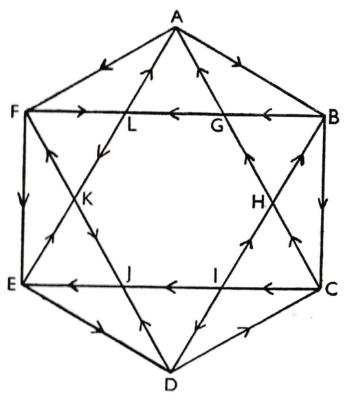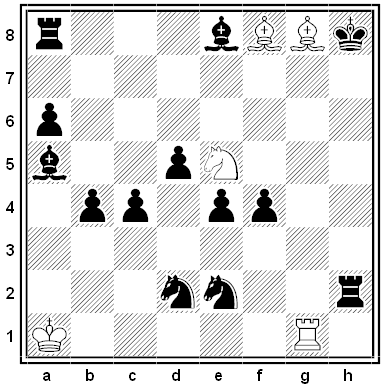Take a whole number, reverse the order of its digits, and subtract one from the other. The difference will always be evenly divisible by 9.
Does this remain true if we just scramble the digits of the first number, rather than reversing them?
Take a whole number, reverse the order of its digits, and subtract one from the other. The difference will always be evenly divisible by 9.
Does this remain true if we just scramble the digits of the first number, rather than reversing them?
A gigantic tire, with a radius of 100 miles, is rolling down Broadway at 60 mph. One driver fails to notice the tire’s approach until its descending surface is just touching the roof of her car, 6 feet above the road. If she leaves the car immediately and can shrink to within 2 feet of the road’s surface, how long does she have to crawl out of the tire’s path?
The Xmas Puzzles 2025 is now live — 13 fiendish puzzles and a “metapuzzle” that draws on their solutions. The competition will run until 20:00 GMT on January 18.
Quizmaster Tim Paulden has pledged just over £1000 in charitable donations as prizes. The top four entries will win a donation to a charity or good cause nominated by the solver: £200 for first place, £150 for second, £120 for third, and £90 for fourth. Those who solve the metapuzzle or score 50 percent or more will also win a donation.
Entry is free and open to all — participants can work alone or in teams of up to five people. Details are at the link above.
A problem from the October 1961 issue of Eureka, the journal of the Cambridge University Mathematical Society:
“The map below represents one-way street system of a certain university city, the direction in which travel is allowed being indicated by arrows. An undergraduate living at A wishes to cycle round the city, visiting each intersection just once, and returning to A. What route must he take?”


By Daniel Currie Hall. Suppose time stops and the white knight can make as many consecutive moves as it pleases. How quickly can it mate the black king provided that it never moves onto a square on which it’s under attack? (It can make captures, provided it makes them “safely.”)
King William’s College, on the Isle of Man, has posted this year’s edition of “The World’s Most Difficult Quiz,” with its customary epigraph, Scire ubi aliquid invenire possis ea demum maxima pars eruditionis est (“The greatest part of knowledge is knowing where to find something”). Some sample questions:
Answers will be posted at the end of January.
Usually MetaFilter organizes a Google spreadsheet of communal guesses; if that materializes I’ll post a link here.
12/24/2025 UPDATE: Here’s the MetaFilter thread, and here’s the shared Google doc.
A reader nicknamed MANX submitted this poser to The Enigma, the magazine of the National Puzzlers’ League, in September 1985.
The letters in BENEATH CHOPIN can be rearranged into a fitting three-word phrase of 3, 5, and 5 letters. What is it?
Reader Chris Dawson has devised a tiling puzzle game with a twist: Players drag, rotate, and scale pieces to fill a grid, but each piece can be scaled to either 1x or 2x its base size.
“The scaling mechanic doesn’t just add variety — it fundamentally changes the maths of the puzzle space. Scaling creates a solution space that grows faster than puzzle complexity itself. In a minimal 4-piece puzzle [below], adding scaling provides a modest 3x multiplier. But add just 2 more pieces, and that multiplier explodes to 21x — a 7-fold amplification. This isn’t additive enhancement; it’s exponential transformation.”
Here’s a demo, and here’s the beta, with daily challenges. A multiplayer version is in development.
(Thanks, Chris.)
This year’s GCHQ Christmas Challenge is now live. Devised by Government Communications Headquarters, the British intelligence agency, this year’s quiz presents seven puzzles for children aged 11-18. They’re designed to test a range of problem-solving skills, including creativity and intuitive reasoning.
Agency director Anne Keast-Butler said: “Puzzles are at the heart of GCHQ’s work to keep the country safe from hostile states, terrorists and criminals; challenging our teams to think creatively and analytically every day.”
Draw a circle and choose 100,000 points at random in its interior. Is it always possible to draw a line through the circle such that 50,000 points lie on each side of it?